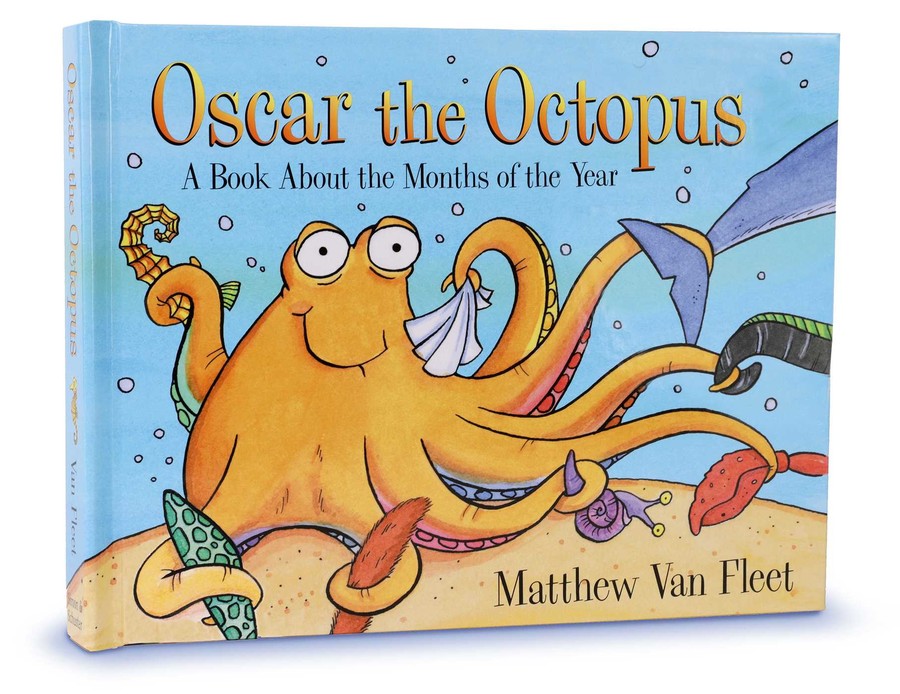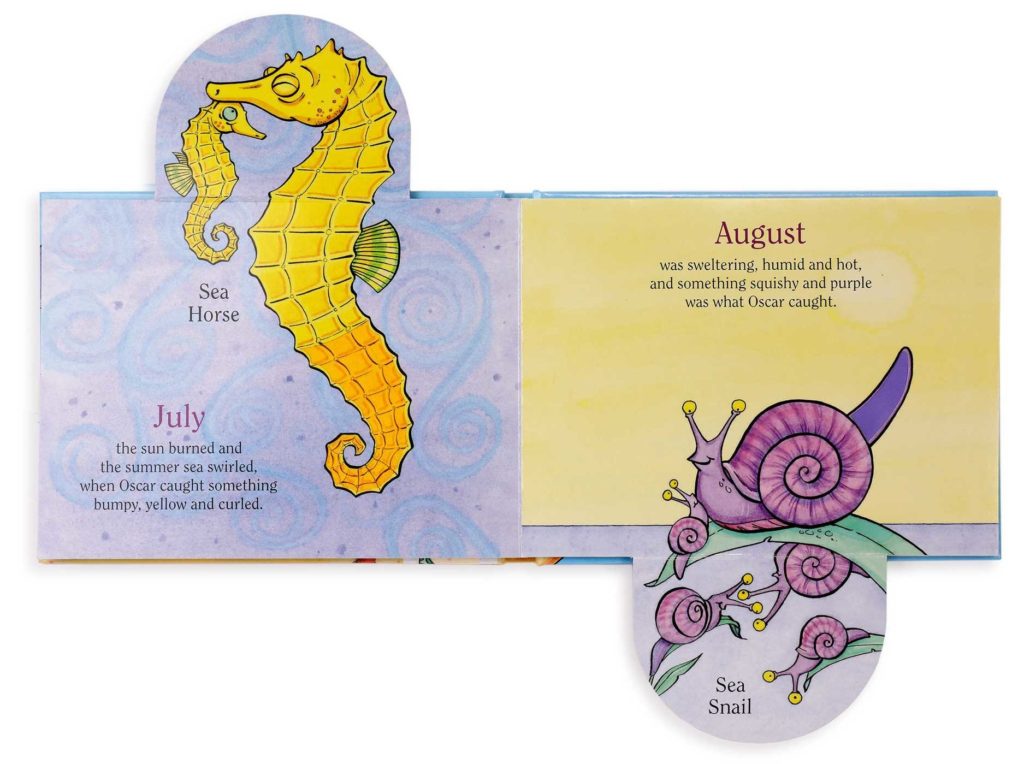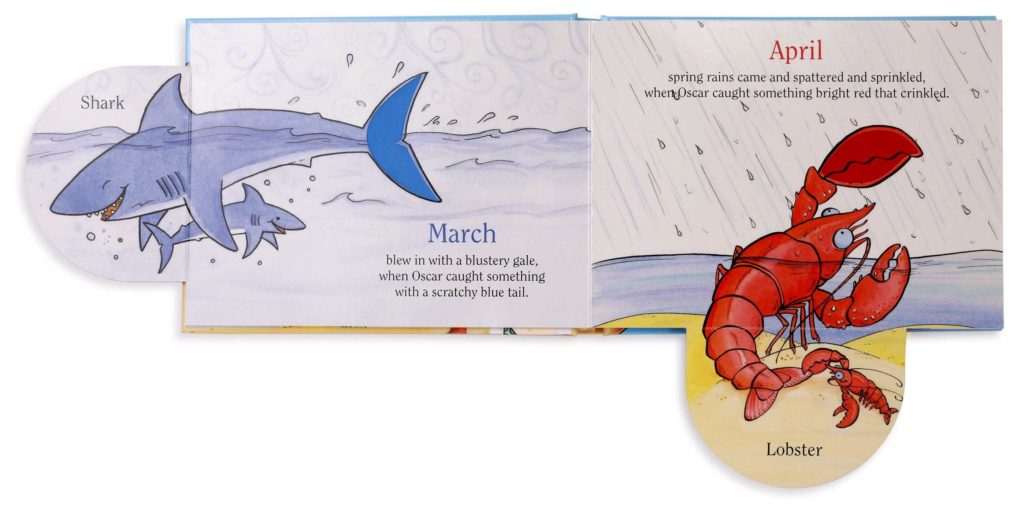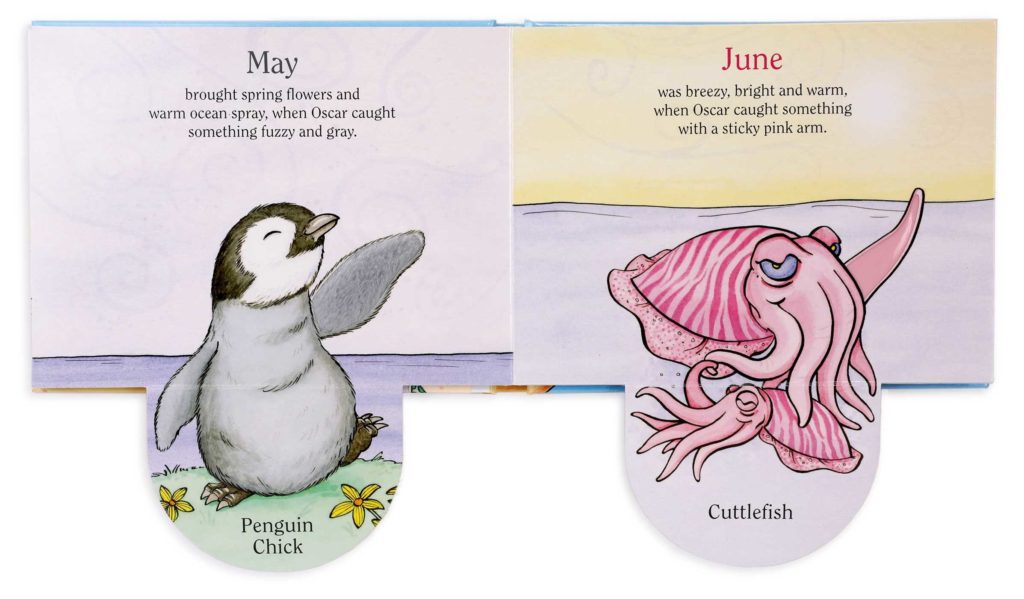Matthew Van Fleet’s books have a way of transcending their audience. He makes books that are squarely aimed at preschool aged students as a way of teaching them some of the basics such as shapes, months, counting, senses and more. The reason that his books are memorable is because of his art and the story that they tell. Oscar the Octopus, A Book About the Months of the Year was previously titled October the Octopus and released as a huggable concept or puppet book.

These are the books that adults put their hands inside the covering and move the pages of the book. The top and bottom page act then like a mouth or a puppet, but with pages that you read the book from. You crawlers and toddlers know what’s up.
Oscar the Octopus re-works the characters a little bit and adds Oscar to serve as the main character throughout the book. As each month is introduced Oscar catches a different animal or sometimes more than one if he’s feeling hungry. Oscars tentacles are pictured on a fold-down flap that reveals that animals. We see the Lionfish in January, two Lobsters in April, a Penguin Chick in May and more.

On some of the months, like in May or August readers can also touch area in the pages where they feel things. They can touch things that are soft, fuzzy, sticky, slick or shiny. These tactile supplements to the book add up and are one of the reasons why Van Fleet’s books stand out amongst the pre-k set.

His book before this one, Chomp Goes the Alligator was an interactive counting book that really left an impression. It’s huge, has a chomping alligator that you can move and was built like a tank. If you’re looking for a counting book for new babies or crawlers start with that one and then look at the rest.
It’s those elements, as well as, the ones that are in Oscar the Octopus that young readers will want to engage with. Oscar is also very well made. The foldable elements are printed on thin cardboard, but are very tear-resistant. The fold up or down at a 180 angle and having them rip from the main page is going to be very difficult or take many years. The spine, front and back of the book are printed on thick cardboard. It’s especially important to gauge the strength of the spine in flap books. A moveable children’s book is only as great as its spine, and in this case it’s great.

We never read October the Octopus, but Oscar the Octopus and its format seems like a much better fit. These pages are bigger and allow for more ways to describe the months. They also give the fold out pages that have octopus arms on the front, a more solid reason to exist. In this book Oscar’s arms seem to be grabbing the prey that are mentioned on the oval folds. Not to worry, as with most month or counting books that lists things and then ‘captures’ them, all of the critters find a way get free from Oscar.




 Facebook
Facebook Twitter
Twitter Flickr
Flickr GooglePlus
GooglePlus Youtube
Youtube